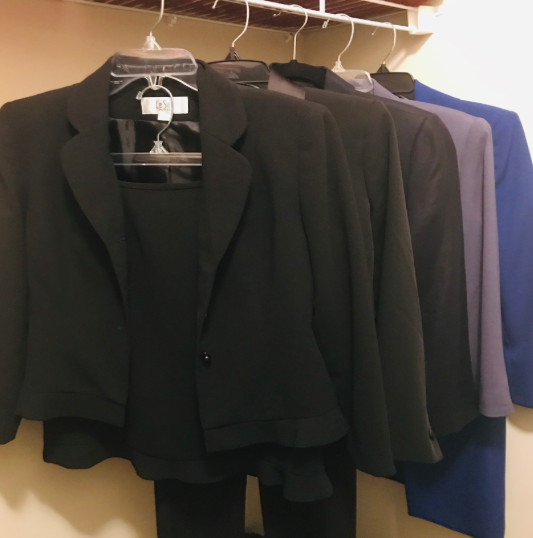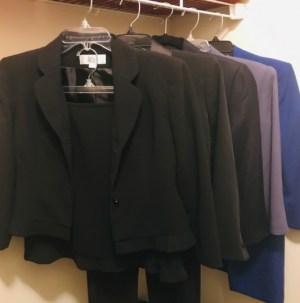An (Imperfect) Narrative to Being Apart of the Sustainability Movement
Over the course of the previous decade, the sustainability movement has taken flight amongst the younger generation, specifically the millennials and Generation Z. The sustainability movement, to explain, is a term entailing the lifestyle changes needed to maintain a healthy and environmentally-conscience means of living to reduce the impacts of pollution and other man-made issues. The zero waste movement, the minimalist movement, and the rise in thrifting clothing, which has been propelled into popularity by influential social media influencers, are three main byproducts of the sustainability movement.
In the span of the previous five years, the zero waste movement has rapidly increased in popularity amongst millennials and Generation Z alike. The primary goal of this movement is to decrease the amount of all waste, including plastic and clothing, to ideally zero. Therefore, the younger generation themselves can try to alleviate the ever-growing impacts of global warming and amounting waste by themselves. Popular zero waste influencers on YouTube and other social media platforms include Lavendaire, Shelbizlee, and many others.
During my freshman and sophomore years of high school, I eagerly took some notes on the zero waste movement from the YouTubers noted above as well as other means of research (aka the Internet). Because of these influences, I notably increased my usage of reusable containers and even bought a reusable water bottle (which is not a hydro flask, by the way). Even though I don’t necessarily use online web extension browsers such as Ecosia, I try to help the environment in every way that I can in my everyday life by simply recycling the plastic water bottles that I do use and occasionally volunteering at aquaponic farms.
2. Minimalism:
Additionally, one offset of the sustainability movement is the rise of minimalism, which is mainly linked to the fashion industry. To explain, minimalists try to limit the amount of their clothing to the bare minimum: only the pants, shirts and shoes needed to survive on a daily basis. Minimalists attempt to lessen their hand in the disastrous impacts of the fast fashion industry by simply purchasing less of their clothes, and even thrifting. To explain, purchasing trendy clothes through fast fashion companies such as Forever 21 and Zara tend to exacerbate the effects of pollution and human trafficking.
In frank honesty, I attempt to maintain a minimalist lifestyle with a nonchalant, unbothered attitude. By decluttering and throwing away any spare things I personally have that qualifies as mere junk, I occasionally try at cleaning up my somewhat messy, yet organized desk. When the applications of the minimalist movement are pertaining to fashion wardrobes, the situation begins to get quite murky. I usually purchase clothes are at times unneeded, but cheap; therefore, that’s a habit that I’ll try to knock off soon.
3. Thrifting:
Despite having been associated with poverty in the past, thrifting has practically taken off as a means to obtain quality fashion for a cheap price and to partake in niche fashion styles from different decades. In fact, thrifting has overtaken retail fashion stores in its popularity. With general and vintage thrift stores in nearly every state, thrifting has become highly accessible and generally accepted amongst all socioeconomic classes in 2020.
Whether the clothes are from Goodwill or Uptown Cheapskate, I thrift my some of my clothes on a regular basis. By getting my business clothes second hand, I saved a lot of money for dress shirts, skirts, pants and even full suits for both Future Business Leaders of America (FBLA) and Debate Club. On a non-academic side, I have gotten cute jumpers and tee shirts from Uptown Cheapskate, a trendy thrift store with nearby locations in Johns Creek and Cumming.
Sophomore Catherine Phillips says that she “[enjoys] thrifting for the environmental factors, the originality factors and the bonus of not paying extreme prices.” She also likes to alter the clothes so that it can be “more original or tailored to [her] style.” By altering the clothes, she can also “shop in all areas of the thrift store.” Phillips usually ops for “cotton, wool, or linen [clothes]” as well because they are usually of a higher quality. Additionally, she “[stays] clear of polyester and synthetic materials as the production of these products [can release] harmful chemicals and can actually leach particles when washed.”
Therefore, the sustainability lifestyle—which encompasses the zero waste movement, minimalism and thrifting—can be somewhat achievable to the everyday person. Although air and water pollution will still occur due to large companies’ waste, any minimal step taken to decrease waste will be and is a great help to the environment.

Hello! My name is Cassidee Jackson, and I am a senior this year. This is my third and final year in the journalism program. Throughout high school, I have...





